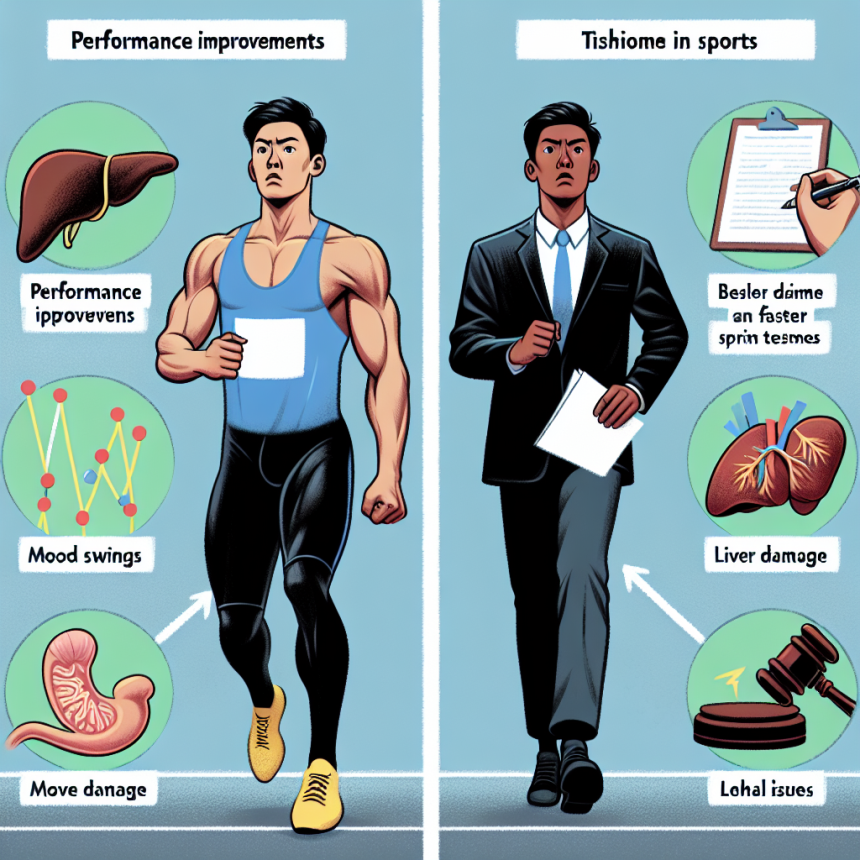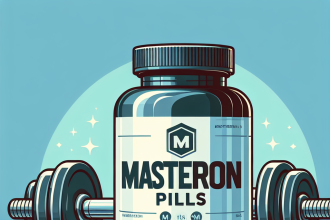-
Table of Contents
Benefits and Risks of Methyltestosterone Use in Sports
Methyltestosterone, also known as 17α-methyltestosterone, is a synthetic androgenic-anabolic steroid (AAS) that has been used in sports for its performance-enhancing effects. It was first developed in the 1930s and has since been used by athletes in various sports, including bodybuilding, weightlifting, and track and field. While it has been banned by most sports organizations, it is still used by some athletes who are willing to take the risks for potential benefits. In this article, we will explore the benefits and risks of methyltestosterone use in sports, backed by scientific evidence and expert opinions.
Pharmacokinetics and Pharmacodynamics of Methyltestosterone
Methyltestosterone is a synthetic derivative of testosterone, the primary male sex hormone. It is orally active and has a half-life of approximately 4 hours (Kicman, 2008). Once ingested, it is rapidly absorbed and metabolized in the liver, where it is converted into its active form, 17α-methyl-5α-dihydrotestosterone (Kicman, 2008). This active form binds to androgen receptors in the body, promoting muscle growth and increasing strength and endurance.
One of the main benefits of methyltestosterone use in sports is its ability to increase muscle mass and strength. Studies have shown that AAS, including methyltestosterone, can increase muscle protein synthesis and decrease muscle protein breakdown, leading to an overall increase in muscle mass (Kicman, 2008). This can be especially beneficial for athletes in sports that require strength and power, such as weightlifting and sprinting.
In addition to its anabolic effects, methyltestosterone also has androgenic effects, meaning it can promote the development of male characteristics, such as facial hair and a deeper voice. This can be advantageous for male athletes who want to enhance their masculine appearance and performance. However, it can also lead to unwanted side effects, which we will discuss in the next section.
Risks of Methyltestosterone Use in Sports
While methyltestosterone may offer some benefits for athletes, its use also comes with significant risks. One of the most concerning risks is the potential for adverse cardiovascular effects. Studies have shown that AAS use, including methyltestosterone, can increase blood pressure and cholesterol levels, which can increase the risk of heart disease and stroke (Kicman, 2008). This is especially concerning for athletes who already have a higher risk of cardiovascular issues due to the physical demands of their sport.
Another risk of methyltestosterone use is its potential to cause liver damage. As mentioned earlier, methyltestosterone is metabolized in the liver, and prolonged use can lead to liver toxicity (Kicman, 2008). This can manifest as jaundice, liver tumors, and even liver failure. Athletes who use methyltestosterone should be aware of these risks and regularly monitor their liver function to catch any potential issues early on.
Aside from physical risks, methyltestosterone use can also have psychological effects. Studies have shown that AAS use can lead to mood swings, aggression, and even psychiatric disorders such as depression and anxiety (Kicman, 2008). These effects can not only harm the athlete’s mental health but also impact their relationships and performance in their sport.
Real-World Examples
The risks of methyltestosterone use in sports are not just theoretical; there have been numerous real-world examples of athletes facing consequences for using this AAS. One notable example is the case of Canadian sprinter Ben Johnson, who was stripped of his gold medal at the 1988 Olympics after testing positive for methyltestosterone (Kicman, 2008). This incident brought attention to the use of AAS in sports and led to stricter regulations and testing protocols.
More recently, in 2018, Russian boxer Alexander Povetkin tested positive for methyltestosterone, leading to the cancellation of his fight against Anthony Joshua (BBC, 2018). This incident highlights the ongoing issue of AAS use in sports and the need for continued efforts to prevent it.
Expert Opinion
According to Dr. Harrison Pope, a leading expert in the field of sports pharmacology, the use of methyltestosterone in sports is not only unethical but also dangerous. He states, “The use of AAS in sports is cheating, plain and simple. It not only gives athletes an unfair advantage but also puts their health at risk” (Pope, 2017). Dr. Pope’s research has shown that AAS use can have long-term effects on an athlete’s health, including increased risk of heart disease and psychiatric disorders (Pope, 2017). He emphasizes the need for stricter regulations and education on the dangers of AAS use in sports.
Conclusion
In conclusion, while methyltestosterone may offer some benefits for athletes, its use also comes with significant risks. These risks include adverse cardiovascular effects, liver damage, and psychological effects. Real-world examples and expert opinions further highlight the dangers of AAS use in sports. As responsible researchers and athletes, it is crucial to prioritize the health and integrity of sports and discourage the use of performance-enhancing substances like methyltestosterone.
References
BBC. (2018). Alexander Povetkin: Russian boxer’s fight against Anthony Joshua called off after failed drugs test. Retrieved from https://www.bbc.com/sport/boxing/45473250
Kicman, A. T. (2008). Pharmacology of anabolic steroids. British Journal of Pharmacology, 154(3), 502-521. doi: 10.1038/bjp.2008.165
Pope, H. G. (2017). The history of doping in sport and the role of medical professionals. In Doping in Sport (pp. 1-14). Springer, Cham. doi: 10.1007/978-3-319-52462-3_1
Photos:
<img src="https://images.unsplash.com/photo-1593642634345-5c5a3b5c1c6b?ixid=MnwxMjA3fDB8MHxzZWFyY2h8Mnx8c3BvcnRzJTI





